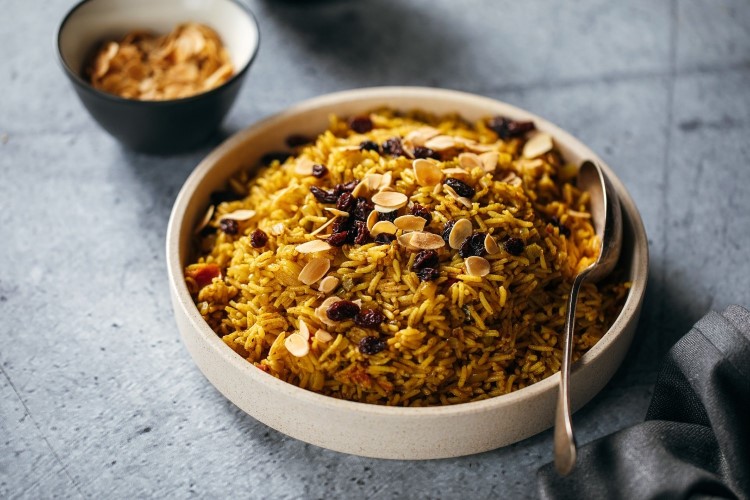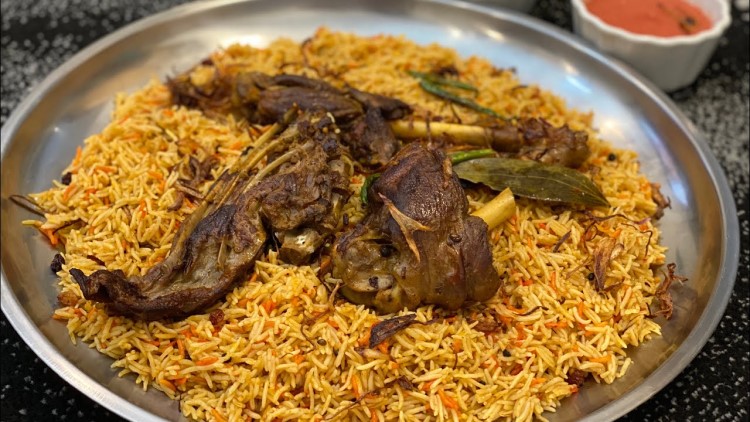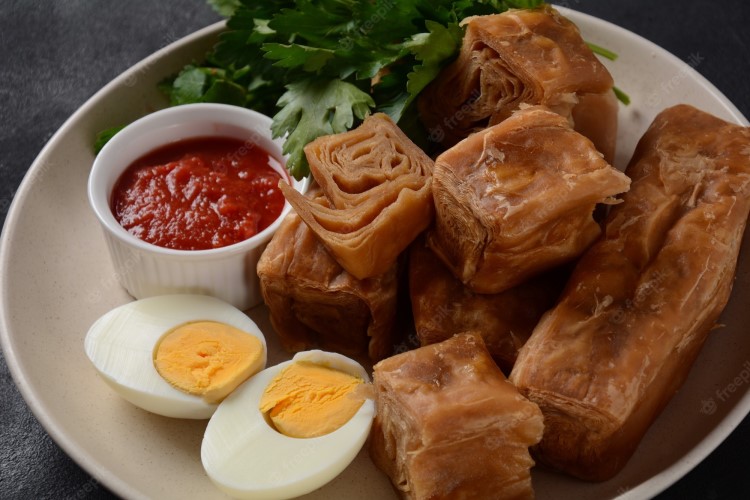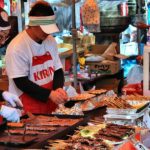Yemen, located on the southeastern tip of the Arabian Peninsula, is a rugged, mountainous, yet strikingly beautiful country with a very rich history. Much of the modern world owes a debt of gratitude to Yemen since it was here where coffee originated! Yemeni food is a little-known culinary adventure that more people should try. These are the most delicious foods in Yemen. The dishes are served communally, typically meant to be enjoyed by family or friends together. So if you feel like taking a trip to this Arabian country, invite some partners to come with you.
7 Delicious Foods In Yemen
Rice With Hawaij Spice
Common in many Yemeni foods, Hawaij is a spice mix that varies but the primary ingredients are cardamon, turmeric, and cumin. Also varied is how much (if any) clarified butter is used for flavor.
Mandi
Mandi is Yemen’s national dish, native to Hadhramaut province, consisting of lamb or chicken meat, fragrant basmati rice, and a mixture of various spices. If lamb is used in the dish, it should be small-sized and as young as possible, to further enhance the flavors.
To make Mandi, the meat should be cooked in the tandoor, a specially designed hole in the ground covered with clay and charcoal, acting as an oven for the suspended meat above it. It is then closed and no smoke is allowed to go outside as it flavors the meat instead.
Martabak
Martabak is a roti-like stuffed and fried pancake that is often served as a popular street food item in countries such as Saudi Arabia, Yemen, Indonesia, and Malaysia. Although the fillings may vary, some of the most popular ones include ground meat, eggs, garlic, onions, peppers, curry, and ghee.
Fresh herbs such as coriander and mint are often used for additional flavoring. The flatbread dough is supposed to be extremely thin and requires a lot of expertise. Another name for the dish is mutabbaq, an Arabic word meaning folded, referring to the way in which the stretchy dough is folded around the filling during cooking.
Madfoon
Madfoon is one of the numerous Arabian meals made with a combination of meat and rice. This signature dish is differentiated by a cooking technique in which the marinated meat is cooked in an underground hole where it is placed on the sand and surrounded by charcoal.
The smoke and heat slowly cook the meat, keeping it succulent and tender while providing it with a slightly smoky flavor and aroma. It is believed that this cooking method was inherited from the nomadic period when traditional ovens did not exist and cooking meat underground was a convenient way to utilize nature and keep the meat protected from hungry predators.
Jachnun
Jachnun is a traditional Yemenite Jewish pastry or flatbread (or something in-between) of Adeni Jewish origin. The Yemenite Jewish immigrants have also popularized the dish in Israel. It’s traditionally served for breakfast on Shabbat morning. The dough is made with a combination of flour, white sugar, water, and margarine.
In the past, whole wheat flour clarified butter (samneh), and date syrup was used instead of the ingredients for the modern Israeli version. The dough is rolled thinly, coated with margarine, then rolled. The rolls are placed in a pot lined with stale bread, which is used to soak up excess oil, then baked overnight at low temperature, usually with a few oven-baked eggs on top.
Areeka
Areeka is a traditional Yemeni dessert that is prepared with a combination of mashed dates and crumbled bread such as khubz, while the additions usually include cream, condensed milk, honey, and spices. This filling dessert can be enjoyed for breakfast or as a light snack, and it is typically drizzled with honey and garnished with slivered almonds. Interestingly, some variations are topped with grated cheese.
Saltah
Saltah is one of the most delicious foods in Yemen, a hearty stew usually eaten for lunch. It can be prepared with or without meat. The key ingredients in saltah are hilbeh, a condiment based on fenugreek, and zhug, a condiment consisting of chilies, oil, cumin, garlic, and coriander.
Hilbeh and zhug are added to the brown stew that often contains lamb or chicken meat if used at all. It is quite likely that the dish is of Turkish origin when it was made from leftover ingredients. Common accompaniments to saltah include rice, tomato, potatoes, vegetables, and scrambled eggs, and saltah is traditionally served piping hot in a metal or stone bowl and eaten with Yemeni flatbread that can serve as a utensil to scoop up the food.












